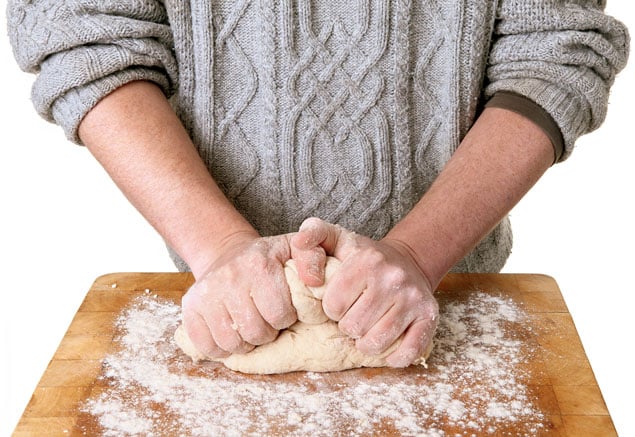If it weren’t for Richard Nixon, I wouldn’t have been a bread baker for the last 39 years.
In 1974, I was a reporter for United Press International, covering the closed House Judiciary Committee hearings into whether Nixon warranted impeachment. Reporters had to hang around to wheedle information from members of Congress as they left for roll calls. Over the weeks, I became a friend of John Beckler, my Associated Press counterpart. The Becklers invited my wife, Doris, and me to dinner.
He served French bread he had baked himself. It was warm. It was crusty. It was good. He showed me the pans he used.
On the way home, I told Doris, “If the AP can bake bread, dammit, so can the UPI.”
The next weekend, we visited Rehoboth Beach and stopped en route to buy pans. We were staying at a borrowed beach house, and dinner was to be at the home of friends. As Doris left to help prepare dinner, I told her: “Don’t buy bread. I’ll bake some.”
I followed the recipe that came with the pans (still use them), and that evening I walked down the street with three loaves of crackling bread under my arm. It was as good as Beckler’s.
I’ve baked thousands since then. When we eat at friends’ homes, they expect bread to arrive with us. I usually take two—one to serve, one to freeze. A friend always says that when she invites other guests for dinner, they ask, “Will you be serving Mike’s bread?” I’m just reporting here.
People say four things about baking bread: (1) Oh, that’s wonderful—nothing’s better than homemade bread. (2) Oh, it takes so much time. (3) Oh, it’s so fattening. (4) Oh, it’s hard.
To which I reply: (1) Yep. (2) True, but it is the dough’s time, not yours. You can do other stuff while it rises—take a nap, read Thurber, pull weeds. (3) Well, maybe, but I still wear the same pants size (and some of the same pants) I wore when I started. (4) Not hard, easy.
Can you measure flour, water, yeast, and salt into a bowl, mix, and let it alone while it rises? Knead the dough with your hands for a while, then shape it? Then put it in a hot oven? That’s hard?
The thing to remember is you’re the boss. Don’t let the recipe intimidate you. In my recipe folder is a clipping that says, “Baking is a science requiring precision and skill, awareness and understanding.” That’s not my philosophy.
Sure, I’ve had disasters. Sometimes I forget the salt. Bread without salt is awful. Sometimes the bread doesn’t rise much. Sometimes it’s underdone. Sometimes it’s burned. (Cut off the crusts.) Sometimes it’s oddly shaped. (Pretend that’s exactly the effect you sought.)
But generally the bread is good. Often it’s sensational. And the more you bake, the fewer the disasters.
So I bake: biscuits, cornbread, muffins, no-knead bread, French, ciabatta, orange (from a 40-year-old Washington Post clipping—it uses a whole orange, skin and all), challah, cinnamon-raisin, onion, doppelbock (made with beer).
Sometimes I add poppy seeds, polenta, cornmeal, nuts, currants. In those cases, people ask: “What kind is this?” I never know how to answer. I don’t want to say “improvisational,” so I choose a name: Harvest. Country. Rustic. They all sound wonderful. People are satisfied.
Remember: Bread is tolerant, and so are friends.
Mike Feinsilber (mikefeinsilber@gmail.com) is a retired reporter. You may e-mail him for the orange-bread recipe.
This article appears in the February 2013 issue of The Washingtonian.


















